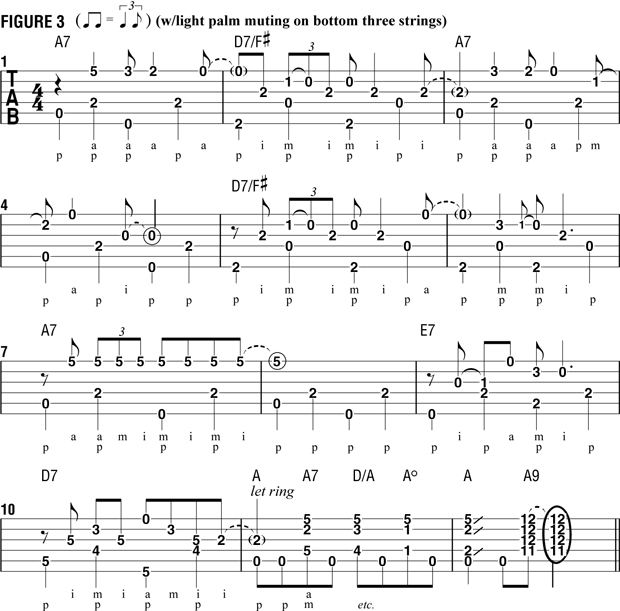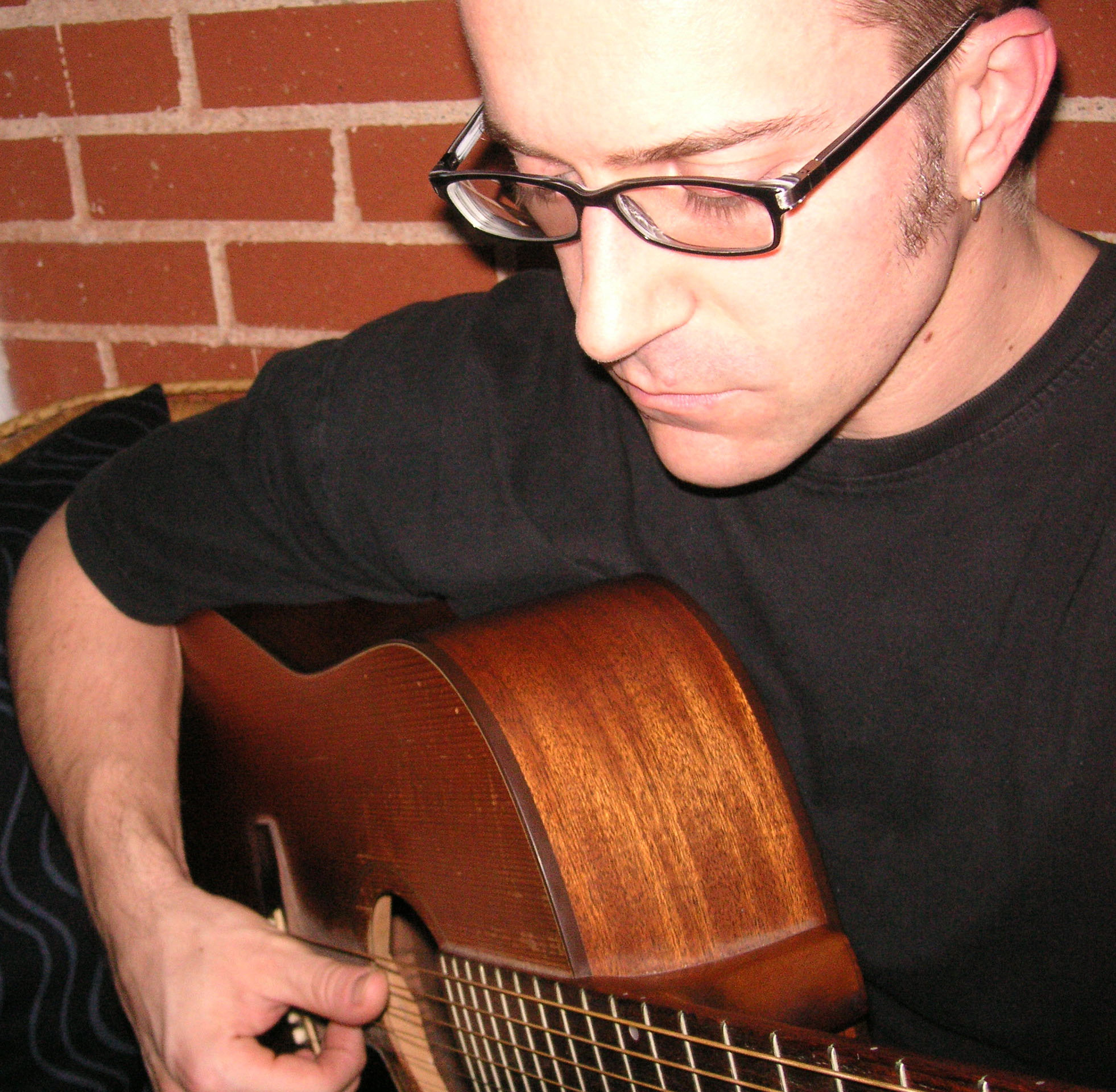The Genius of Chet Atkins: Two Patented Techniques
Learn two patented, incredibly useful Chet Atkins guitar techniques.

Chet Atkins made countless recordings as a studio musician, producer and solo artist. Many of his recordings—particularly those of the artists he produced in Nashville, like Elvis Presley, Roy Orbison and the Everly Brothers—laid the foundation for early rock and roll.
Though Atkins played many styles, he is most often associated with country music and acoustic guitars. By using a combination of thumbpick and fingers, Chet created his signature “fingerpicking” sound. This month, I’m going to look at two patented Chet Atkins techniques.
FIGURE 1 shows an approach Atkins often used when playing scales. With the fret hand near fourth position, ascend/descend A Mixolydian (A B C# D E F# G), grabbing each successive scale tone on a neighboring string and mixing in all available open notes.

It should sound similar to playing a scale on a harp, or on a piano with the sustain pedal held down. Keep your fret-hand fingers depressed as long as possible so that notes overlap, and follow the indicated picking/fingerstyle indications to get the full effect. This “harp trick” is common in the lines of country players like Albert Lee and Brent Mason, and can be done with any scale, provided the open strings are “in key.”

The last note of each chord in FIGURE 2 is a harp harmonic, another technique pioneered by Atkins (and later taken to new heights by Lenny Breau, Ted Greene and Tommy Emmanuel).
On beat four of each bar, you will see “H.H.” Touch a fretted string with the plucking-hand’s index finger precisely 12 frets higher than the note appearing parenthetically in tab, then pluck that string behind your index finger’s point of contact, using the thumb (or thumbpick) to produce a chiming “octave overtone” harmonic. The preceding notes of each chord are played using traditional fingerstyle technique (without harmonics).

Atkins often wove the aforementioned techniques (and more) into stunning solo guitar arrangements rooted in Travis picking (named after Travis). This somewhat country-like fingerstyle approach involves thumbpicking alternating bass notes (usually the root and fifth) on different strings while sounding melodic parts (typically built around a fretted chord shape) with the plucking hand’s remaining fingers.
In FIGURE 3, a 12-bar blues in A, you’ll see this technique in action with a variety of A7, D7 and E7 shapes. Familiarize yourself with each chord voicing first, study the structure of each bass note pattern and practice repeatedly (while chord shapes are held down) until the bass line feels automatic. Then slowly add the melody notes, focusing on one bar at a time until you have it perfected.
Get The Pick Newsletter
All the latest guitar news, interviews, lessons, reviews, deals and more, direct to your inbox!
A singer-songwriter/multi-instrumentalist/film composer, Musician's Institute instructor, and author of 50+ transcription/instructional books, Dale Turner is also Guitar World's "Hole Notes"/"Acoustic Nation" columnist, and the former West Coast Editor of Guitar One magazine. Some of Dale’s old, weird, rare, and/or exotic instruments are featured in his score for WEEDS, the first animated short completed within the Filmmakers Co-op at Disney Feature Animation. His most recent CD, Mannerisms Magnified, was praised by Guitar Player magazine for its "Smart pop tunes that are crammed with interesting guitar parts and tones ... Like what the Beach Boys might do if they were on an acid trip that was on the verge of getting out of control. Yeah!"
"Upgrading from your entry-level acoustic opens the door to an entirely new world of tonewoods, body shapes, and brands": 6 signs it's time to upgrade from your first acoustic guitar
"I'm past my prime": 5 common excuses for not learning the guitar – and 5 body and mind-boosting reasons you should








![Joe Bonamassa [left] wears a deep blue suit and polka-dotted shirt and plays his green refin Strat; the late Irish blues legend Rory Gallagher [right] screams and inflicts some punishment on his heavily worn number one Stratocaster.](https://cdn.mos.cms.futurecdn.net/cw28h7UBcTVfTLs7p7eiLe.jpg)


